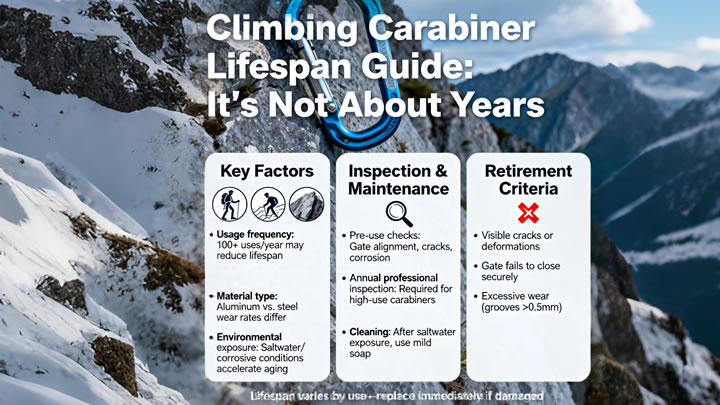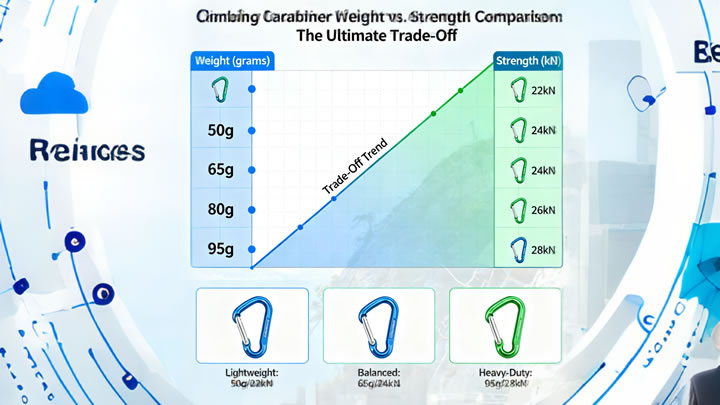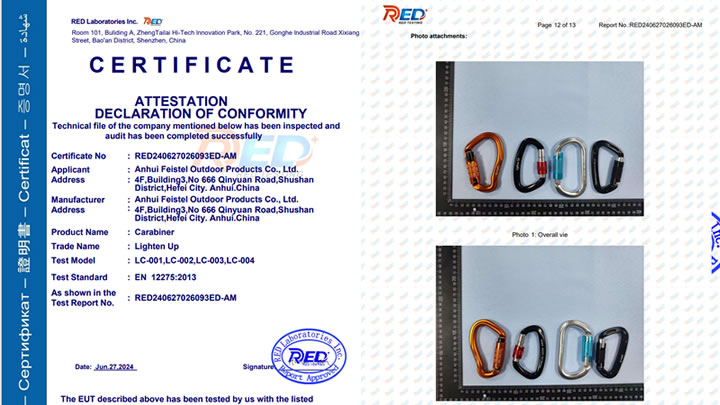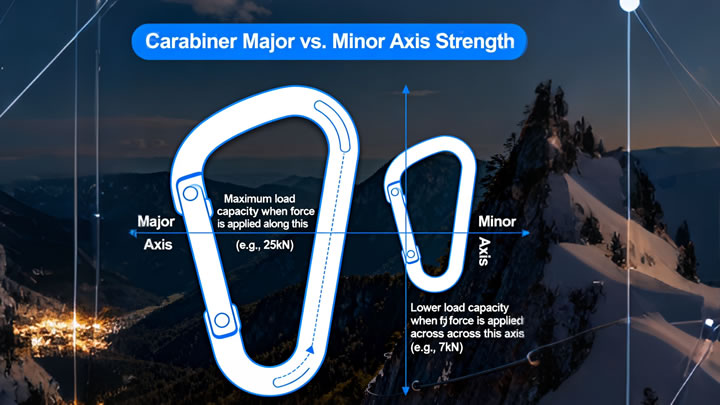What Does "CE" Mean on a Climbing Carabiner? Your Guide to Safety Certification
If you look at any piece of modern climbing equipment, from a simple carabiner to a complex harness, you will almost certainly find a small, often overlooked marking: "CE." For many, this might seem like obscure bureaucratic jargon. In reality, this two-letter stamp is one of the most critical indicators of safety and reliability on your gear. It is a silent promise that the equipment you trust with your life has been designed, tested, and manufactured to meet the highest international safety standards. This article delves into what the CE mark truly represents, the rigorous process behind it, and why it is non-negotiable for any serious climber.
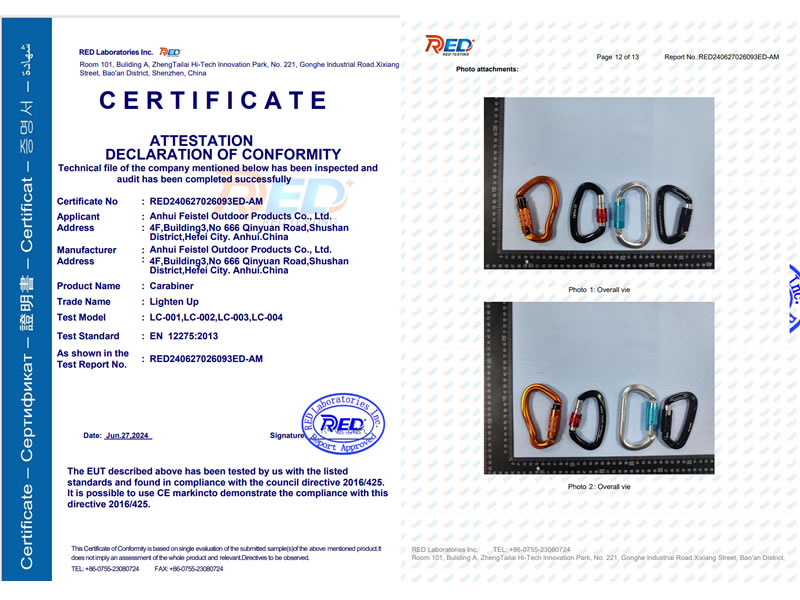
CE: More Than Just a Logo
CE stands for "Conformité Européenne," which is French for "European Conformity." It is a mandatory conformity mark for products sold within the European Economic Area (EEA). However, its influence is global. Because the EU is such a massive market, manufacturers worldwide ensure their products are CE-certified to be sold there, which in turn raises the safety baseline for climbers everywhere.
The CE mark is not a quality seal like a "best in class" award. Instead, it is a manufacturer's declaration that the product complies with all applicable European Union health, safety, and environmental protection legislation. For climbing equipment, this is a profound declaration of safety.
The Specific Standard: EN 12275
The "CE" mark on a carabiner is meaningless without a specific standard behind it. For climbing carabiners, the relevant standard is EN 12275:2013 - "Mountaineering equipment - Connectors - Safety requirements and test methods."
This document is the rulebook. It leaves no room for ambiguity, specifying everything a carabiner must endure to be deemed safe, including:
- Material Requirements: Dictating the types of aluminum or steel alloys that can be used to ensure inherent strength and durability.
- Dimensional Specifications: Defining minimum and maximum sizes for critical areas like the gate opening to ensure consistent and secure rope clipping.
- Gate Functionality: Requiring smooth operation, a secure locking mechanism (for screw-gate and auto-locking carabiners), and a specific minimum spring force to ensure the gate closes reliably.
- The Core Strength Tests: This is where the famous kN ratings come from. The standard mandates three destructive tests that must be passed on sample carabiners:Major Axis Strength: The force required to break the carabiner when loaded from spine to gate.Minor Axis Strength: The significantly lower force required to break it when cross-loaded.Open Gate Strength: The force required to break it when loaded with the gate held open.
A carabiner bearing the CE mark has been proven, through independent laboratory testing, to meet or exceed all the minimum requirements set out in this exhaustive standard.
The Certification Process: Who Verifies the Claims?
A common misconception is that a company can simply stamp "CE" on its product. For climbing equipment, which falls under the "Personal Protective Equipment (PPE)" Regulation, the process is far more stringent.
Manufacturers must submit their carabiners for testing by an independent, notified body. These are accredited organizations, separate from the manufacturer, whose job is to audit the production process and test samples from a production batch. They verify that the carabiners consistently meet the EN 12275 standard. Only after this external validation can the manufacturer legally affix the CE mark.
CE vs. UIAA: What's the Difference?
You will often see the UIAA (International Climbing and Mountaineering Federation) Safety Label alongside the CE mark. The UIAA sets its own safety standards, which are often very similar and sometimes even more rigorous than the EN standards. In many cases, the standards are harmonized. A product tested for UIAA certification typically fulfills the requirements for CE marking as well. Think of the UIAA label as an additional, sport-specific seal of approval from the global climbing community's governing body.
Conclusion: The Mark of Trust
The "CE" on your carabiner is far more than a regulatory hurdle. It is the culmination of rigorous engineering, standardized testing, and independent verification. It is your assurance that the strength ratings stamped on the gear are not just marketing numbers but are backed by a proven, repeatable, and legally enforceable safety process.
When you see the CE mark, you see a commitment to safety that transcends borders. It is a fundamental baseline that every climber should look for and expect from their equipment. In a sport where margins for error are slim, this small symbol provid

